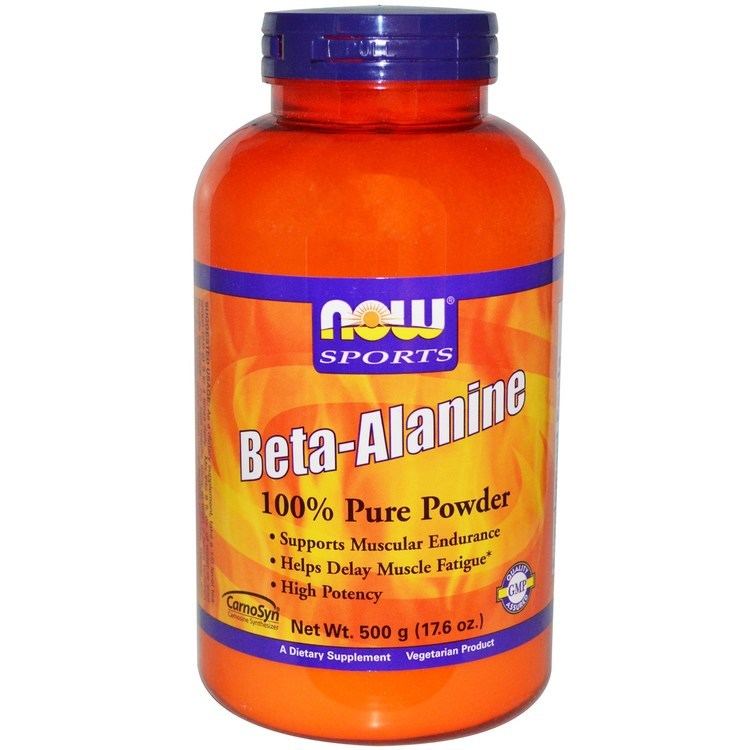Formula C3H7NO2 Molar mass 89.09318 g/mol | Melting point 207 °C Density 1.44 g/cm³ | |
 | ||
Appearance white bipyramidal crystals | ||
What is beta alanine side effects benefits
β-Alanine (or beta-alanine) is a naturally occurring beta amino acid, which is an amino acid in which the amino group is at the β-position from the carboxylate group (i.e., two atoms away, see Figure 1). The IUPAC name for β-alanine is 3-aminopropanoic acid. Unlike its counterpart α-alanine, β-alanine has no stereocenter.
Contents
β-Alanine is not used in the biosynthesis of any major proteins or enzymes. It is formed in vivo by the degradation of dihydrouracil and carnosine. It is a component of the naturally occurring peptides carnosine and anserine and also of pantothenic acid (vitamin B5), which itself is a component of coenzyme A. Under normal conditions, β-alanine is metabolized into acetic acid.
β-Alanine is the rate-limiting precursor of carnosine, which is to say carnosine levels are limited by the amount of available β-alanine, not histidine. Supplementation with β-alanine has been shown to increase the concentration of carnosine in muscles, decrease fatigue in athletes and increase total muscular work done. Simply supplementing with carnosine is not as effective as supplementing with β-alanine alone since carnosine, when taken orally, is broken down during digestion to its components, histidine and β-alanine. Hence, by weight, only about 40% of the dose is available as β-alanine.
L-Histidine, with a pKa of 6.1 is a relatively weak buffer over the physiological intramuscular pH range. However, when bound to other amino acids, this increases nearer to 6.8-7.0. In particular, when bound to β-alanine, the pKa value is 6.83, making this a very efficient intramuscular buffer. Furthermore, because of the position of the beta amino group, β-alanine dipeptides are not incorporated into proteins, and thus can be stored at relatively high concentrations (millimolar). Occurring at 17–25 mmol/kg (dry muscle), carnosine (β-alanyl-L-histidine) is an important intramuscular buffer, constituting 10-20% of the total buffering capacity in type I and II muscle fibres.
Even though much weaker than glycine (and, thus, with a debated role as a physiological transmitter), β-alanine is an agonist next in activity to the cognate ligand glycine itself, for strychnine-sensitive inhibitory glycine receptors (GlyRs) (the agonist order: glycine ≫ β-alanine > taurine ≫ alanine, L-serine > proline).
Athletic performance enhancement
There is evidence that β-alanine supplementation can increase exercise performance, but concern about lack of information about safety.
Ingestion of β-Alanine can cause paraesthesia, reported as a tingling sensation, in a dose-dependent fashion.
Metabolism
Sources for β-alanine includes pyrimidine catabolism of cytosine and uracil.
β-alanine can undergo a transanimation reaction with pyruvate to form malonate-semialdehyde and L-alanine. The malonate semialdehyde can then be converted into malonate via malonate-semialdehyde dehydrogenase. Malonate is then converted into malonyl-CoA and enter fatty acid biosynthesis.
Alternatively, β-alanine can be diverted into Pantothenate and Coenzyme A biosynthesis.
